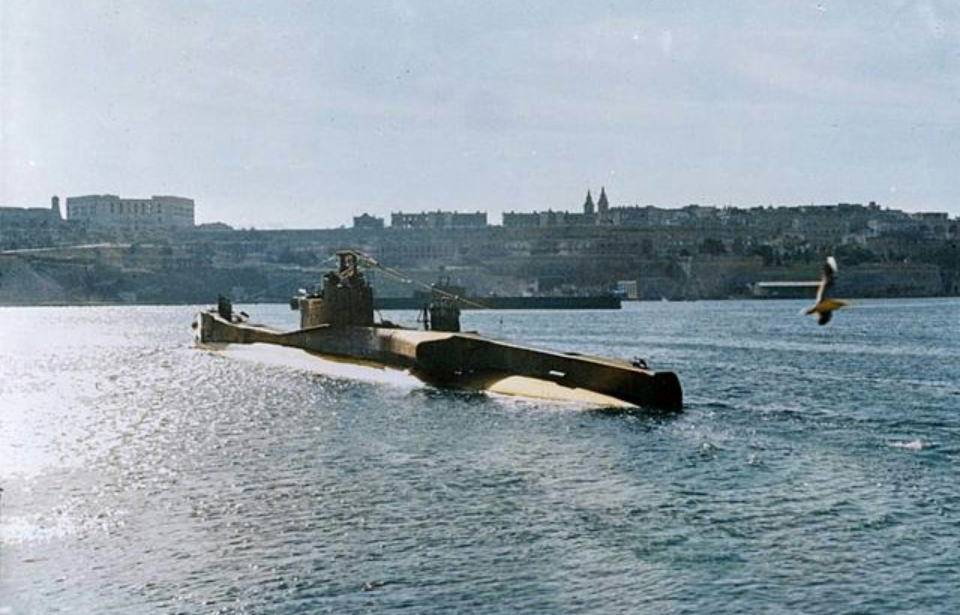A Royal Navy submarine that seemingly vanished without a trace during the Second World War has finally been located off the coast of Greece. HMS Trooper (N91) was conducting a top-secret mission in 1943, when she and her crew of 64 disappeared.

Commissioned in August 1942, Trooper spent the majority of her short career in the Mediterranean, sinking a handful of Italian ships and causing damage to two more.
While transiting the Aegean Sea, off the coast of the Dodecanese Islands, on her 8th war patrol, Trooper seemingly disappeared. Following the Italian surrender in September 1943, German military officials were determined to stop the Allies gaining any sort of control of the Dodecanese, which were under Italian control at the time.
In the lead up to Trooper‘s vanishing, British Intelligence learned the Germans were planning an assault on the islands, and, in response, the submarine, commanded by Lt. John S. Wraith, traveled to the Aegean Sea for what, from the outside, appeared to be a simple patrol. However, Wraith had been told to land three undercover operatives and cargo at the port of Kalamos.
Trooper arrived on September 30, dropped off her passengers, and went about conducting her usual war patrols until October 5, when she was ordered to keep watch of the waters between Naxos and Icaria, as the British had, once again, received word of an enemy attack, this time on Leros.
Trooper and her crew failed to return on October 17, at which time it was presumed she’d struck German sea mines around Leros and sank. While the Germans had claimed the submarine was sunk by GA.45, it was determined the Q-ship had actually attacked HMS Torbay (N79), which had escaped the encounter without any damage.
The wreck was discovered by a team of underwater researchers from Planet Blue, led by Kosta Thoctarides.
Much of the search for the missing submarine had previously centered on known minefields around the islands of Leros, Kos and Kalymnos, thanks to a recount from Lt. Cmdr. Adrian Seligman, who captained a vessel in the Royal Navy’s Lan Schooner Flotilla F8. He’d alleged to have seen a T-class submarine in Alinda Bay, Leros, which he had presumed was Trooper after hearing a voice that sounded like John S. Wraith.
However, Seligman was mistaken, as logs from other submarines in the area don’t make mention of the vessel being the area. This prompted Thoctarides and his team to re-examine former German minefields, leading them to the Drache, a minelayer that had laid five minefields north of Donousa on September 26, 1943, the same day Trooper had left Beirut and in the area where she was ordered to patrol between October 6-9.

This new information prompted a search of the waters north of Donoussa. After a sonar scan of the area, a remotely-operated vehicle (ROV) was deployed to search the seafloor. Eventually, came across HMS Trooper, 253 meters deep in the Icarian Sea.
According to the team, the bow and stern lie near each other, while the conning tower is located “a little further away.” The position of the bow planes indicates that Trooper had been surfaced around the time the explosion that sunk her occurred.
“The 84-meter-long Trooper is broken into three distinct sections, bow, midships and stern, which confirms a very violent sinking,” Thoctarides is quoted as saying in an interview with Protothema.
He adds, “The result of the explosion was the immediate and rapid sinking, with the submarine breaking into three separate pieces: First the bow went down, then the stern and lastly the midship section, which had remained on the surface for a few minutes.”
Upon hearing the news, Capt. Richard Wraith, the son of John Wraith, said, “I have been aware for many years of the strenuous effort by the Greek research team to locate the wreck of the submarine and am now very pleased and excited that their endeavours have been rewarded. I hope that any family members of those lost with my father may be able to use the definitive location of Trooper as a focal point to help lay to rest any memories of their loved ones.”
More from us: ‘Ghost Ship of the Pacific’ Discovered Off the Coast of California
Are you a fan of all things ships and submarines? If so, subscribe to our Daily Warships newsletter!
Throughout their investigation, Thoctarides and his crew made sure to not disturb the wreck in any way, as it’s considered a war grave.
